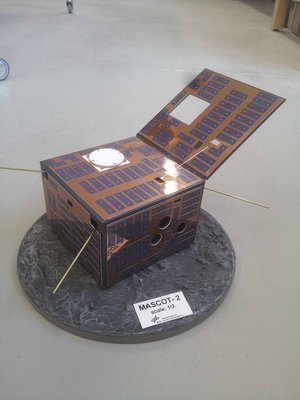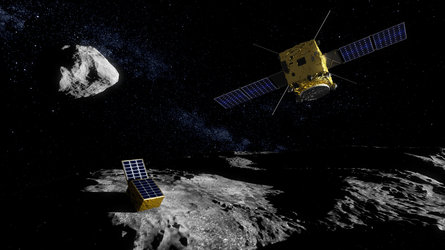Accept all cookies Accept only essential cookies See our Cookie Notice

About ESA
The European Space Agency (ESA) is Europe’s gateway to space. Its mission is to shape the development of Europe’s space capability and ensure that investment in space continues to deliver benefits to the citizens of Europe and the world.
Highlights
ESA - United space in Europe
This is ESA ESA facts Member States & Cooperating States Funding Director General Top management For Member State Delegations European vision European Space Policy ESA & EU Space Councils Responsibility & Sustainability Annual Report Calendar of meetings Corporate newsEstablishments & sites
ESA Headquarters ESA ESTEC ESA ESOC ESA ESRIN ESA EAC ESA ESAC Europe's Spaceport ESA ESEC ESA ECSAT Brussels Office Washington OfficeWorking with ESA
Business with ESA ESA Commercialisation Gateway Law at ESA Careers Cyber resilience at ESA IT at ESA Newsroom Partnerships Merchandising Licence Education Open Space Innovation Platform Integrity and Reporting Administrative Tribunal Health and SafetyMore about ESA
History ESA Historical Archives Exhibitions Publications Art & Culture ESA Merchandise Kids Diversity ESA Brand Centre ESA ChampionsLatest
Space in Member States
Find out more about space activities in our 23 Member States, and understand how ESA works together with their national agencies, institutions and organisations.
Science & Exploration
Exploring our Solar System and unlocking the secrets of the Universe
Go to topicAstronauts
Missions
Juice Euclid Webb Solar Orbiter BepiColombo Gaia ExoMars Cheops Exoplanet missions More missionsActivities
International Space Station Orion service module Gateway Concordia Caves & Pangaea BenefitsLatest
Space Safety
Protecting life and infrastructure on Earth and in orbit
Go to topicAsteroids
Asteroids and Planetary Defence Asteroid danger explained Flyeye telescope: asteroid detection Hera mission: asteroid deflection Near-Earth Object Coordination CentreSpace junk
About space debris Space debris by the numbers Space Environment Report In space refuelling, refurbishing and removingSafety from space
Clean Space ecodesign Zero Debris Technologies Space for Earth Supporting Sustainable DevelopmentApplications
Using space to benefit citizens and meet future challenges on Earth
Go to topicObserving the Earth
Observing the Earth Future EO Copernicus Meteorology Space for our climate Satellite missionsCommercialisation
ESA Commercialisation Gateway Open Space Innovation Platform Business Incubation ESA Space SolutionsLatest
Enabling & Support
Making space accessible and developing the technologies for the future
Go to topicBuilding missions
Space Engineering and Technology Test centre Laboratories Concurrent Design Facility Preparing for the future Shaping the Future Discovery and Preparation Advanced Concepts TeamSpace transportation
Space Transportation Ariane Vega Space Rider Future space transportation Boost! Europe's Spaceport Launches from Europe's Spaceport from 2012Latest
AIM: Asteroid touchdown
Thank you for liking
You have already liked this page, you can only like it once!
As part of ESA’s proposed Asteroid Impact Mission would come the Agency’s next landing on a small body since Rosetta’s Philae lander reached 67P/Churyumov–Gerasimenko in 2014.
In 2022 the Mascot-2 microlander would be deployed from the main AIM spacecraft to touch down on the approximately 170-m diameter ‘Didymoon’, in orbit around the larger 700-m diameter Didymos asteroid.
The 15 kg Mobile Asteroid Surface Scout-2 (Mascot-2) is building on the heritage of DLR’s Mascot-1 already flying on Japan’s Hayabusa-2. Launched in 2014, the latter will land on asteroid Ryugu in 2018.
Mascot-2 would be deployed from AIM at about 5 cm/s, and remain in contact with its mothership as it falls through a new inter-satellite communications system. Didymoon’s gravity levels will only be a few thousandths of Earth’s, so the landing would be relatively gentle, although multiple bounces may take place before it comes to rest.
Light-emitting diodes (LEDs) would help AIM to pinpoint its microlander’s resting place from orbit. In case of a landing in a non-illuminated area, a spring-like ‘mobility mechanism’ would let the microlander jump to another location. Onboard GNC ‘guidance navigation and control’ sensors would gather details of the landing both for scientific reasons and to determine the microlander’s orientation for deployment of the solar array to keep it supplied with sufficient power for several weeks of surface operations.
As well as a solar array, AIM would also deploy its low frequency radar LFR instrument, while cameras perform visible and thermal surface imaging. LFR would send radar signals right through the body, to be detected by AIM on Didymoon’s far side, to provide detailed subsurface soundings of an asteroid’s internal structure for the first time ever .
Then Mascot-2 would repeat these measurements after Didymoon has been impacted by the NASA’s DART (Double Asteroid Redirection Test) probe, to assess the extent of structural changes induced by this impact event. AIM and DART together are known as the Asteroid Impact & Deflection Assessment mission.
-
CREDIT
ESA/ScienceOffice.org -
LICENCE
ESA Standard Licence
-
Documentary
-
-
-
-

Mascot-2 lander model

AIM’s eye view of asteroids

Landing on an asteroid

AIM's asteroid lander















 Germany
Germany
 Austria
Austria
 Belgium
Belgium
 Denmark
Denmark
 Spain
Spain
 Estonia
Estonia
 Finland
Finland
 France
France
 Greece
Greece
 Hungary
Hungary
 Ireland
Ireland
 Italy
Italy
 Luxembourg
Luxembourg
 Norway
Norway
 The Netherlands
The Netherlands
 Poland
Poland
 Portugal
Portugal
 Czechia
Czechia
 Romania
Romania
 United Kingdom
United Kingdom
 Slovenia
Slovenia
 Sweden
Sweden
 Switzerland
Switzerland


























